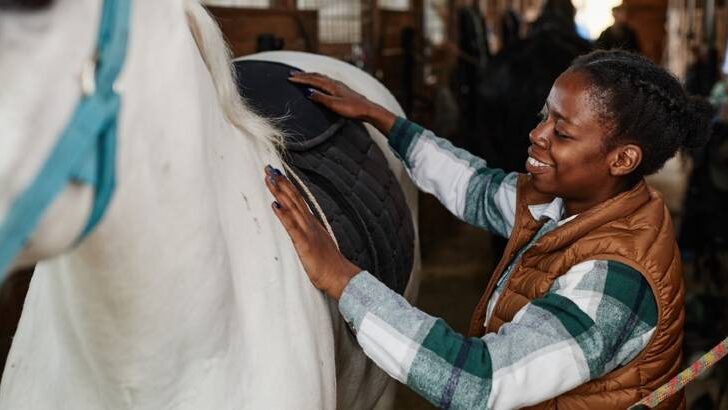Affiliate Disclaimer
As an Amazon Associate I earn from qualifying purchases. It helps me keep the website going. Thank you for your support.
There is a joke that is common in the equine industry: How do you make one million in the horse business? Start with two million! It is no secret buying a horse can be expensive. But how much does it cost to lease a horse?
Generally, the annual cost to lease a horse will be about one-third of the horse’s value. However, this benchmark can be affected by a variety of factors. These include the type of horse and lease, and whether any equipment is included. Ongoing costs, such as board, veterinary, and farrier care and feed will also need to be considered. However, the cost to lease a horse is generally cheaper than to buy a horse of your own.
There are many different things to consider when you lease a horse. Read on to learn more about what is involved in a horse lease.
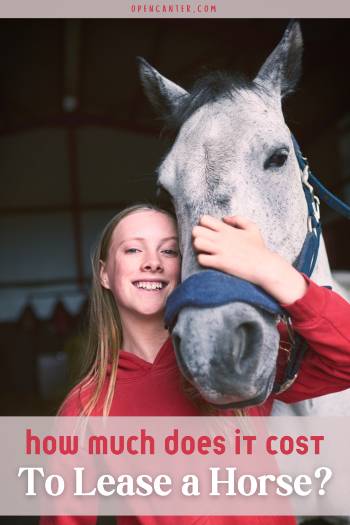
What Is a Horse Lease?
Put very simply, a horse lease is an arrangement in which you effectively ‘hire’ a horse of your own. There are two parties involved in a lease; the lessee and the lessor. The lessor is the person who owns the horse. The lessee is the person who ‘hires’ the horse.
There are two main types of horse leases; a full lease and a partial or half lease. Most leases will fall broadly under one of these two categories. However, the details of the lease agreement can vary considerably depending on the situation.
In a full lease, the lessee is responsible for all care, and likely costs, for the horse. They have exclusive access to the horse. Depending on the owner, the lease may be free or there might be a fee. A full lease, in which there is no lease fee charged, is called a free lease.
In a partial or half lease, the horse is shared between the owner and lessee, or between two lessees. The costs are split between the lessees, depending on the individual arrangement. Access to the horse is split 50/50, as is riding time. Once again, there may or may not be a fee for the lease of the horse, in addition to the expenses.
There are some other situations that are similar to a lease. However, these are very short-term arrangements that are generally infrequent in nature. This includes paying to be able to take a horse on a trail ride. It may also include paying to have exclusive access to a normally shared school horse for a particular day.
While these short-term arrangements will likely have a written agreement in place, they are much lower in commitment. This is simply due to the short length of the ‘lease’ and the one-off cost.
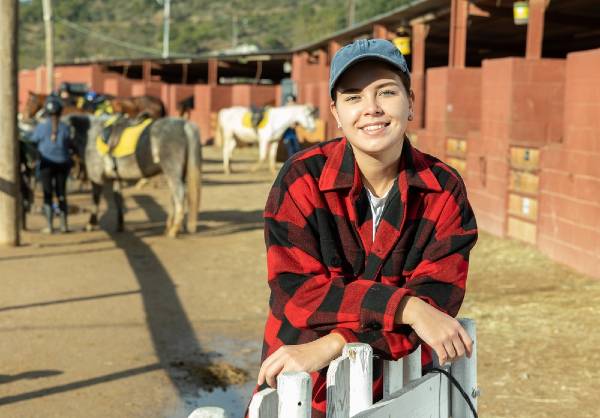
Breakdown of The Common Costs to Lease a Horse
Here follows a summary of the most common expenses that you can expect in a lease. All of these expenses are ongoing, apart from the initial purchase of any equipment required. This means that you can expect these costs at least annually.
1. Horse Lease fee
The price of the lease fee will vary depending on a number of different factors. In some circumstances, you may not need to pay a lease fee at all.
Full leases can cost anywhere from $100 to over $1,000 per month. Horses with extensive training or talent will be at the upper end of the range. Partial or half leases tend to range from $50 to $550 per month.
2. Boarding costs
This is a fee that you pay to keep your horse at a particular facility or location. If the horse is kept at yours or the owner’s property, you may not have to pay this fee.
Full board can range from $300 to over $1,500 per month. Facilities with more amenities and services will be at the higher end of the scale. Full board means barn staff cover all basic care tasks like feeding, turnout, and stall cleaning.
For a partial board, you can expect to pay anywhere from $200 to $800 per month. The cost will vary on what services and facilities you choose to have access to.
Self-board is the most cost-effective option. It ranges from $100 to $500 per month. You will be required to handle all aspects of horse care yourself, and may not have access to as many facilities.
3. Feed
Your horse will also require feed, the cost of which depends on how your horse is kept. Horses in large fields may only need a small amount of hay and supplemental feed. However, those who are stabled require much more hay.
You can expect to pay anywhere from $5 to $20 per bale of hay; depending on the type and quality. Bagged commercial feeds can range from $20 to $60 per bag. How often you will need to buy feed will depend on your horse’s workload. (source)
Make sure you factor in any supplements. Basic supplements like a vitamin and mineral balancer can cost between $10 and $40 per month. Specialized supplements or medication can range from $30 to over $100 per month.
4. Lessons and training
If you want or need lessons, this will come at an additional cost. Lesson prices can vary based on location, discipline, and the trainer’s expertise. You can expect to pay anywhere from $50 to over $100 per hour for private lessons. Group lessons may be a better option, ranging from $30 to $80 per hour. (source)
Some trainers offer training packages, charged on a monthly basis. These packages include a certain number of lessons and may also include assistance at shows. You can expect to pay anywhere from $200 to over $600 per month, depending on the trainer.
5. Show expenses
If you plan to take your horse to shows, be aware that these come with their own set of costs. Entry fees differ greatly between disciplines and levels of competition. You can expect to pay anywhere from $30 to $500 per show in entry fees. Other fees may include stable or yard hire, or a facility fee.
You will also have the hauling expenses to transport your horse to the show. This can range up to $2 per mile in fuel costs. You may also have the additional cost of hiring a horse trailer if you do not have one.
If your trainer accompanies you to the show, you will also need to pay for their time. A trainer may charge anywhere from $50 to over $150 for the day. This may already be paid for in a training package if you have one.
6. Routine maintenance and care
In most agreements, the lessee is responsible for routine health care. This includes regular vaccinations and deworming, dental checks, and farrier visits. Depending on the horse, this may also include regular massages or chiropractic work. This will also likely include an annual veterinary health check.
Routine veterinary care can range from $200 to $500 or more annually. Farrier visits generally cost between $30 to $150 and are required every six to eight weeks. Horses that wear shoes are more expensive to maintain than those who don’t.
Visits from bodyworkers or chiropractors can range from $50 to $200 per visit, depending on your horse’s workload, and may be required every three to six months.
7. Riding and horse care equipment
Depending on the agreement, you may need to purchase riding equipment. This includes things like a saddle, bridle, grooming tools, riding boots, a helmet, and rugs. This is not an exhaustive list!
Sometimes, the owner will provide the horse’s gear as part of the lease. This can save you a lot of money, as items like saddlery and rugs can be quite expensive!
Buying a saddle is one of the most significant outlays, ranging from $500 to $5,000. The price heavily depends on the type and quality of the saddle. Leather saddles are generally more expensive than synthetic options. You can expect to pay from $50 to $500 for a bridle, once again depending on the quality.
Other items like a girth, stirrups, halter, and breastplate (if required) are usually around $50 to $100 each. Exercise boots, if required, are similar in price. A basic grooming setup is around $50 to $100. Horse rugs can vary from $50 to $300 or more, depending on the type of rug. Most horses have at least two or three rugs, each with a different purpose.
You will also be responsible for making sure items like your saddle fit correctly. This usually involves an annual visit from the saddle fitter which cou. Depending on how much work is required, fees can range from $50 to $200,
8. Your own safety and riding gear
Even if all the horse’s equipment is supplied as part of the lease, you will still need to purchase items for yourself. The most important of these is safety equipment. You will need a helmet ($50 to $500) and riding boots ($50 to $500) in order to ride safely. Buying a body protector, ranging from $150 to $600, can be an added layer of safety.
You may also like to purchase items like riding gloves and breeches or jodhpurs. If you are just casually riding, you may not need these items. However, if you are doing lots of riding or lessons you will likely need them.
Additionally, if you are competing, you will need clothes to wear at competitions. Depending on the level and discipline, these items may have to meet specific requirements. For example, dressage competitions usually require riders to wear white breeches or jodhpurs and a black or navy jacket.
9. Insurance
Some owners require lessees to provide liability insurance to protect against potential accidents or injuries involving the horse. The horse itself may also be covered by insurance, in case of major illness or injury. The lessee is generally required to cover the cost of the insurance.
Liability insurance can range from $300 to $1,500 or more per year. The cost depends on the value of the horse and the coverage the policy provides.
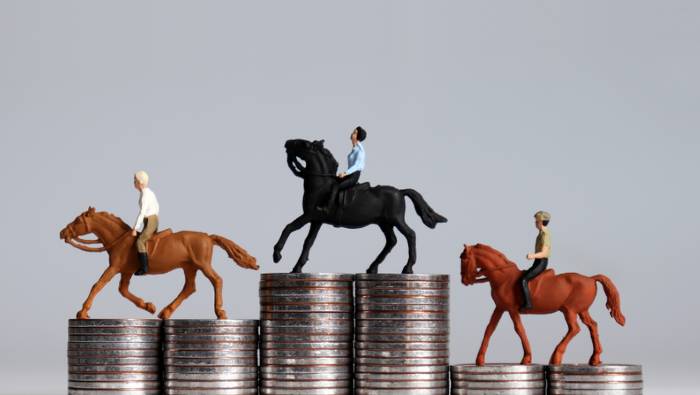
Factors Affecting the Cost to Lease a Horse
There are many things that affect the cost to lease a horse. To start with, your location and nearby facilities can affect the cost. It generally costs more to lease a horse in an urban area than it does in a rural area. This is because space is at a premium and boarding fees will likely be higher.
However, rural areas may incur higher costs when it comes to services. This includes vet, farrier, and chiropractic/body worker visits. This is because of the increased travel required. You may have to transport your horse to a central location to access services.
The type of horse you lease will greatly affect the cost. Leasing a well-educated and talented sport horse will be more expensive than leasing a pleasure or trail horse. The breed of horse can also affect the cost. Breeds that are less common, deemed “pretty” or are performance bred are often more expensive. Examples of these include gaited breeds like Tennessee Walkers, Paint horses, or specially bred Warmbloods.
The activities you wish to do with your lease horse can also affect the cost. If you want to develop your skills and compete, you will likely need lessons. This will be more expensive than the rider who simply wants a best friend to trail ride with on weekends.
The discipline you choose can also impact the cost. For example, if you want to do eventing, you will need more equipment than someone who only rides in dressage. Eventers need to have both dressage and jumping equipment. They usually also require speciality safety equipment for the cross country phase.
Tips to Reduce The Cost to Lease a Horse
Keeping a horse, either your own or a lease, can become very expensive! However, there are some things you can do to help reduce the cost.
Firstly, negotiate the terms and cost of the lease with the owner. The lease fee the owner has in mind may include costs for things that you do not require. Check out my article on how to negotiate a horse lease here.
Regularly evaluate your boarding arrangements to check you are getting value for money. For example, at some barns, you can pay an additional fee to access an arena. However, if you rarely use the arena, it may be worth considering canceling this part of your board.
Opt for self-board if you have the time, as this is the most cost-effective option. You may be able to team up with a friend. They can care for your horse on days you can’t make it to the barn, and you do the same for them in return. This can make self-board options possible for both of you.
Make sure you shop around when purchasing equipment. While quality should not be compromised on items like your saddle, there could be a good second-hand option. End-of-season sales can be a good place to purchase things like rugs.
Spend time and effort to ensure your gear is cared for and stored correctly. Even budget leather bridles can last a long time if they are regularly checked, cleaned, and oiled. This will reduce costs to replace items.
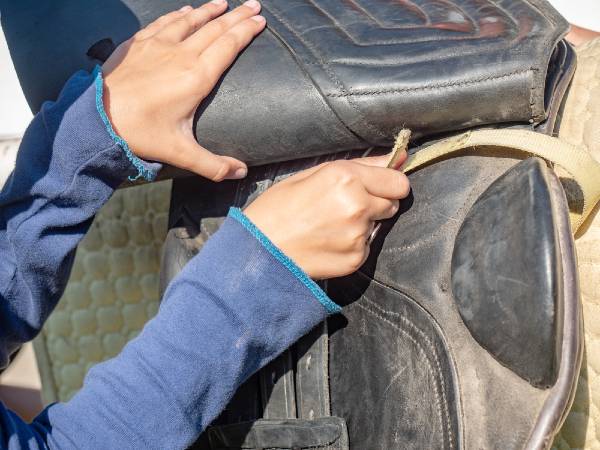
Being Prepared for Hidden or Unexpected Expenses
Just like with anything in life, it is important to have some funds available for emergencies or unexpected costs. As a responsible horse owner, you still need to provide care when things do not go to plan.
It is recommended to have at least $5,000 available in savings to cover unexpected costs. Equine medical emergencies can become quite expensive to resolve. There is often the initial cost to provide immediate, and sometimes lifesaving, care. Depending on the issue, there may be ongoing rehabilitation costs. (source)
It is important to detail who carries the responsibility of costs and decision-making in the lease agreement. Major equine emergencies can cause death or severe and permanent injury, if not attended to quickly. In these scenarios, the owner may be willing to share the bills in order to save the horse.
Other unexpected costs can include the replacement of broken items like bridles or rugs. If your horse rips their rug in the middle of winter, you will need to replace it. Similarly, you need to replace your helmet each time you fall off and hit your head. This ensures you are not riding around in a damaged helmet. You only get one head!
Make sure you have a detailed lease agreement in place. The agreement needs to outline who is responsible for what cost, including emergencies. It must be signed by both the lessor and the lessee. This will reduce the risk of hidden costs arising that were not clear when you agreed to the lease.
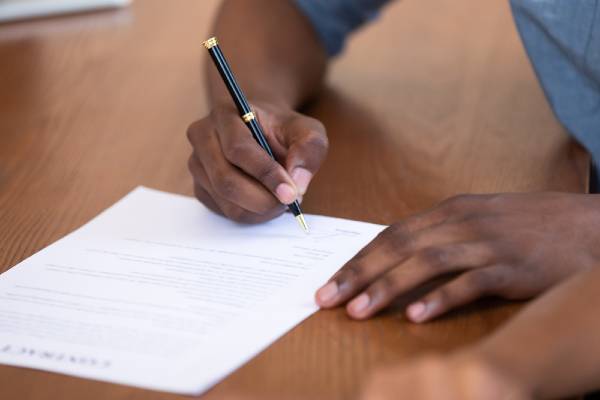
Weighing The Cost to Lease a Horse Against Horse Ownership
It is no secret that horses and riding are an expensive hobby! There are benefits to both leasing a horse and owning one. The option that is best for you will depend on your circumstances and goals at the time.
The key difference between leasing and owning a horse is the initial upfront purchase price. You will need to buy the horse, as opposed to paying a fee each month. This can amount to a considerable sum of money, depending on the type of horse.
When comparing the maintenance costs between leasing and owning a horse, not much is different. Costs for veterinary and farrier care, along with board, will be similar. However, as an owner, you will have full control over which vet and farrier you use. You can also shop around for alternative boarding locations that are cheaper.
Buying your own horse means that you have full control and exclusive access, at all times. You can choose what discipline you do, what shows you go to, and when you ride. You also have full control over how and where your horse is kept. Some of these options are limited in lease agreements.
Leasing a horse is a great option for those new to horse ownership. It gives you a taste of what it is like to own a horse, without the initial upfront purchase price. It is also a great way to prepare you for owning a horse or two of your own.
Finding a lease with equipment supplied is another upside when starting out. It means that you won’t have to on-sell any equipment you have bought if you decide horses are not for you. This can save considerable funds.
Final Thoughts
While the cost to lease a horse can be cheaper than buying a horse, it can also be quite expensive. Before committing to a horse lease, ensure you have a budget that sets how much you can spend.
Spend extra time negotiating a lease that fits within your budget, or wait until the right horse comes along. For those starting out, you do not need to pay top dollar for a top-level show horse! A safe and reasonably schooled horse, along with basic equipment, will start you off.

